Peoria, AZ Pollen and Allergy Report for Summer 2023
Pollen Allergy Trends in Peoria, AZ
When is pollen lowest in Peoria, AZ?

February
Lowest month total PPM
Avg. PPM
When is pollen highest in Peoria, AZ?

March
Highest month total PPM
Avg. PPM
How does pollen in Peoria, AZ compare to Arizona?
Peoria has a higher average PPM than the state of Arizona.
Peoria yearly avg PPM:
Arizona yearly avg PPM:
How does pollen in Peoria, AZ compare to the USA?
Peoria has a lower average PPM than the USA.
Peoria yearly avg PPM:
USA yearly avg PPM:
Is pollen worse this year in Peoria, AZ?
Spring 2023 was better than spring 2022.
Spring 2023 PPM:
Spring 2022 PPM:
Average PPM in Peoria, AZ
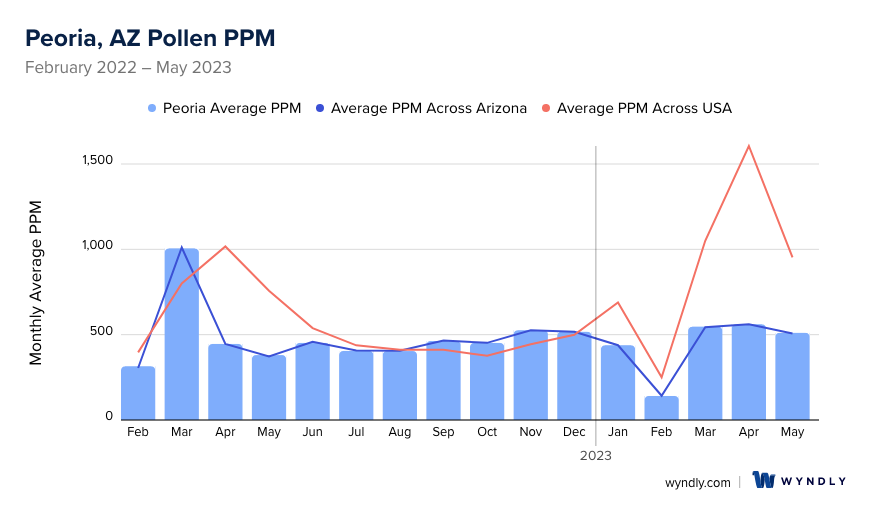

Peoria, AZ Pollen and Allergy Breakdown by Month
Grass
When is grass pollen highest in Peoria, AZ?
May has the highest grass pollen in Peoria, AZ with an average PPM of
When is grass pollen lowest in Peoria, AZ?
December has the lowest grass pollen in Peoria, AZ with an average PPM of
Tree
When is tree pollen highest in Peoria, AZ?
March has the highest tree pollen in Peoria, AZ with an average PPM of
When is tree pollen lowest in Peoria, AZ?
July has the lowest tree pollen in Peoria, AZ with an average PPM of
Weed
When is weed pollen highest in Peoria, AZ?
December has the highest weed pollen in Peoria, AZ with an average PPM of
When is weed pollen lowest in Peoria, AZ?
February has the lowest weed pollen in Peoria, AZ with an average PPM of
Peoria, AZ Pollen Monthly Breakdown by Pollen Type
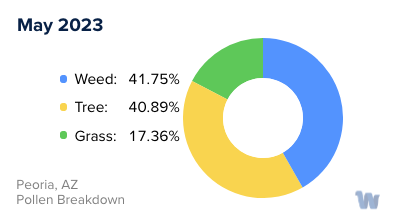


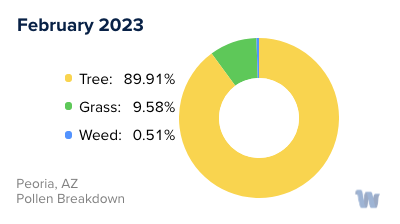
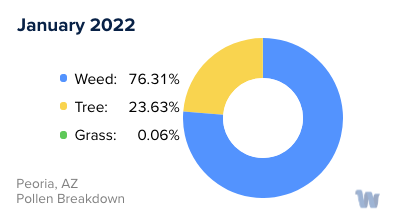
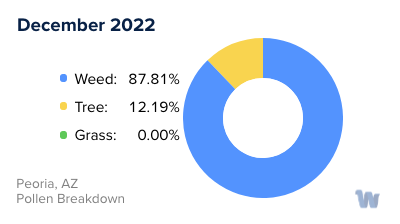
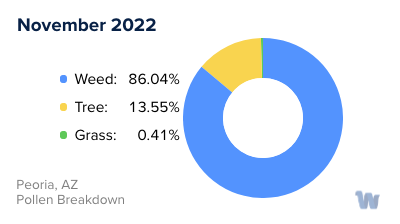
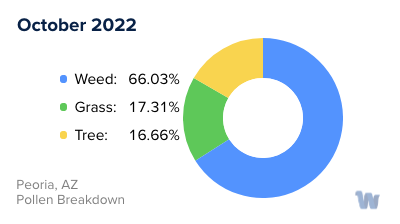



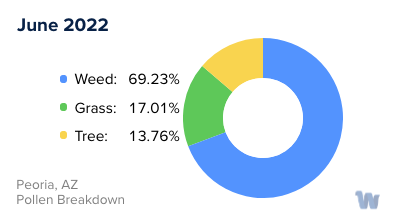
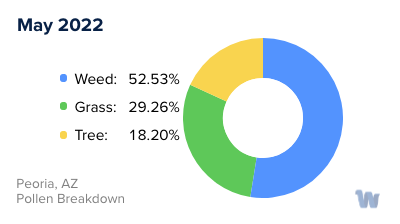
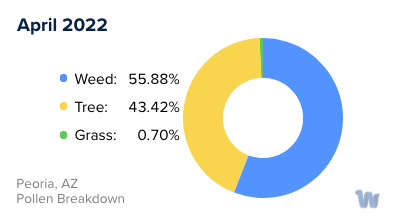
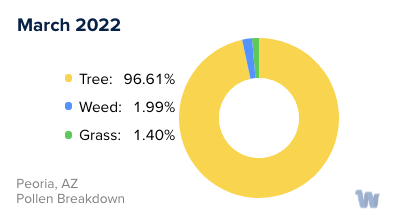
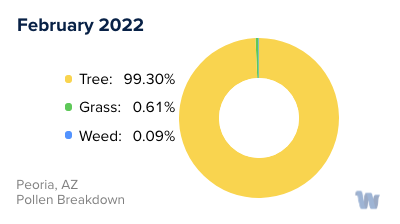
Pollen and Hay Fever in Peoria, AZ
Pollen allergies, often referred to as hay fever, are a common cause of seasonal discomfort for many residents in Peoria, Arizona. The vast desert landscapes and lush green spaces that define the city's charm can also be a source of bothersome allergy symptoms for susceptible individuals.
Pollen is a fine powder produced by trees, grasses, and weeds as part of their reproductive process. It's lightweight and easily dispersed by the wind, which can bring it into contact with your eyes, nose, and mouth, leading to an allergic reaction if you're sensitive to it.
In Peoria, the types of pollen that commonly cause allergies can be broadly categorized into tree, grass, and weed pollen. Each of these has its own peak season, meaning that pollen allergies can be a year-round concern for some individuals.
Tree pollen, particularly from Mesquite and Palo Verde trees, is usually the first to appear in the year. It's most prevalent in the spring, usually from February to June. The tiny, dust-like particles these trees produce can travel on the wind for miles, making tree pollen a widespread allergen in the city.
Following tree pollen season, grass pollen becomes the main concern. Bermuda grass is a common grass type in Arizona, and it tends to release its pollen from May to September.
Lastly, weed pollen, especially from the prevalent Ragweed plant, tends to peak in the late summer and fall, usually from August to November. Ragweed is a hardy plant that thrives in the dry Arizona climate, and a single plant can produce up to a billion pollen grains in a season.
So, whether you're hiking in the beautiful Sonoran Desert, enjoying a picnic in a park, or simply walking down the streets of Peoria, being aware of these pollen seasons can help you anticipate and understand your allergy symptoms. Remember, it's not the outdoors that's the enemy – it's just a bit of microscopic pollen.


